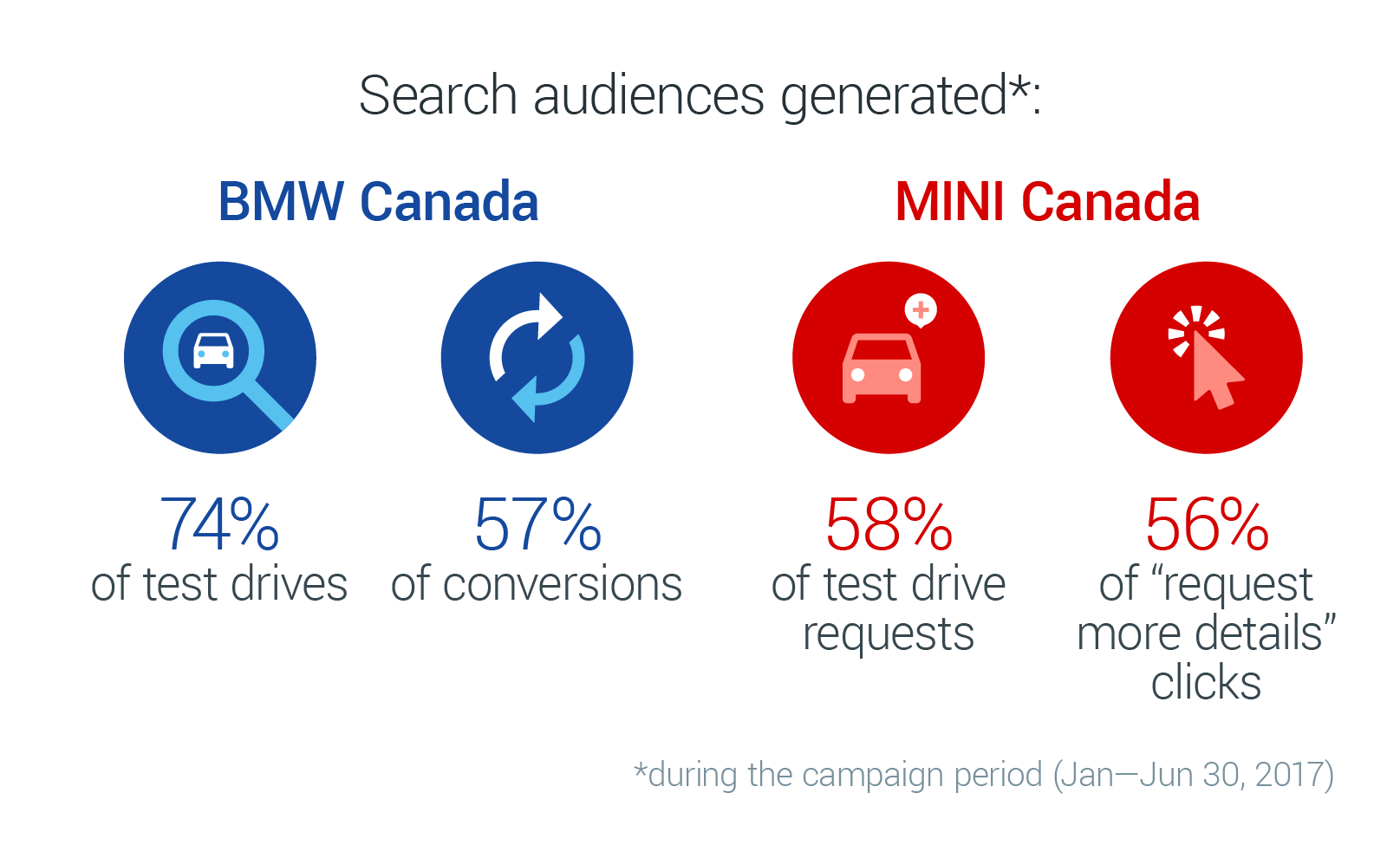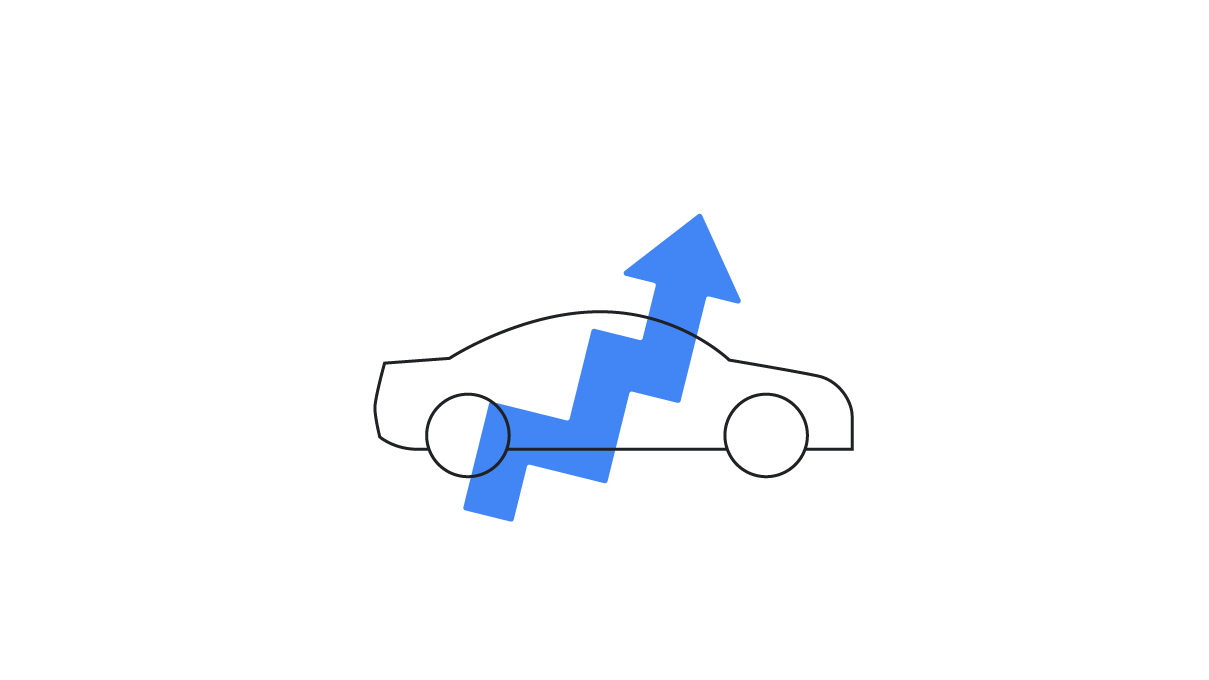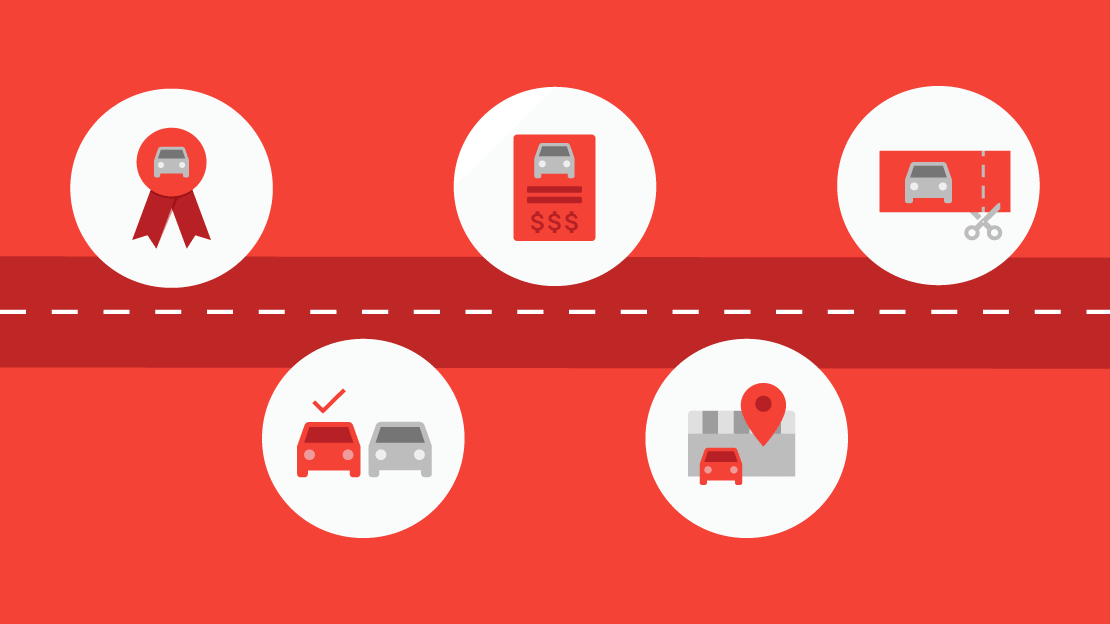With so much complex consumer data on hand, it can be hard to connect it all to what really matters: finding and converting your best customers. Here, we look at how two of Canada’s luxury vehicle brands are driving more qualified leads using an audience-first strategy.
Today, the Canadian car shopper makes, on average, three visits to a car dealership.1 And these consumers are more informed than ever before by the time they walk through the door.
Let’s look at a real-life example: In partnership with Luth Research, a U.S. car buyer shared her journey to buy a new car with us. Throughout her path to purchase, she encountered over 900 digital touchpoints, including 139 searches, 14 YouTube videos, 89 images, 69 dealer interactions, and 186 manufacturer interactions.2 What’s more, 71% of her journey occurred on mobile.2
Luxury vehicle brands BMW and MINI Canada recognized the value of these insights and built a successful audience-first strategy across its marketing campaigns. By identifying the most valuable actions on their sites, both brands were able to reach their most-qualified leads throughout their purchase journeys.
How to turn consideration into conversions
In today’s multi-device, multi-platform world, consolidating channels may seem challenging. But research shows that marketers who make the effort to unify customer data are more successful: Leading marketers are 1.5X more likely to have an integrated marketing and advertising technology stack.3 With that in mind, here’s how you can turn consideration into conversions:
1. Action digital data. Search audiences are made up of prospects who interact with your brand or industry across multiple touchpoints. They’ve conducted repeated searches for high-value keywords and have revisited relevant websites. Doubling down on these qualified leads is key to an efficient and accountable marketing strategy.
2. Focus on the customer journey. Determine who is looking to purchase vs. who is in the research phase, and optimize your investment to drive your most likely conversion. This will help you understand which consumers are further down the purchase funnel and allow you to tailor your advertising based on their interests.
3. Use tools and technology available to you. Smart data collection begins with audience lists. These lists live as assets for brands to leverage over time and rely heavily on data inputs to become more intelligent—all so they can cut through Canada’s online population to find more potential customers.
BMW and MINI acted fast on these crucial insights, doubling down on their most qualified leads.
BMW and MINI engage more qualified leads with audience solutions
BMW Group opened its first dealership in Canada nearly 50 years ago and now has 49 BMW dealerships and 30 MINI dealerships across the country. The brand had optimized both digital and traditional media channels to deliver impressive consideration results, but it was pushing for new ways to engage a higher value audience. Media Experts, BMW Group’s partner in digital marketing, wanted to leverage the brand’s leading position as one of the most-considered brands in luxury.1 Together, the teams developed an innovative, audience-first strategy that would help push more high-consideration consumers down the purchase funnel.

BMW and MINI drove more leads through segmented audience lists than any other media tactic. A quick definition: segmented audiences are subsets of users you can isolate based on data (e.g., a group of users who have completed a certain action, such as requesting a quote). BMW and MINI valued these lists, and while these audiences displayed a higher cost-per-click, the segments they identified and targeted were much further along the path to purchase and therefore more likely to convert.
By leveraging audience solution tools and insights, both brands have been able to invest in high-value customers who are actively engaged in the luxury car buying process and ultimately more likely to book a test drive or buy a BMW or MINI vehicle.
BMW and MINI leveraged audience solutions to gain a clear view of the customer and realize the true value of their digital efforts. Brands and marketers looking to follow suit should start by asking themselves these three questions:
1. Am I leveraging all of the data coming from highly interested customers on digital?
2. What new customer insights can I unlock by combining my customer data with digital data?
3. How can I connect audience insights to media activation and drive better performance?
Today’s path to purchase is more complex than ever. It’s critical for marketers to rethink their audience targeting strategies and understand the lifetime value of customers by getting smarter with data.






